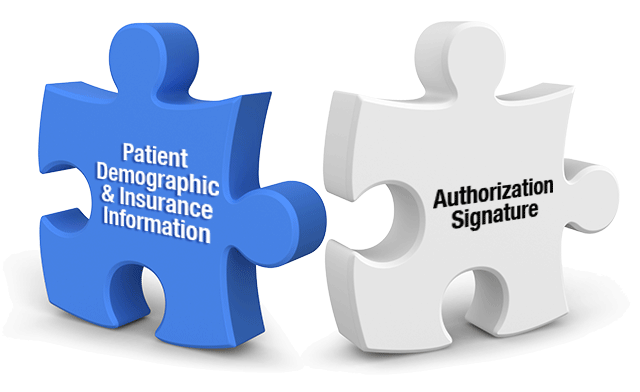The Window of Opportunity- Insurance Info and Signatures
The Best Time
With all the changes that are happening in the healthcare industry in the United States right now, more than ever it’s important that EMS field providers engage patients to collect demographic information, especially insurance information, in the field.
The best time to obtain information happens when ambulance crew members are in the presence of the patient or the patient’s significant others (ie. family, caregivers, guardians, Powers of Attorney, etc.)

Two Big Pieces of the Puzzle
We focus on all things EMS billing in this space.
With this fact in mind, we offer that the two biggest pieces of the EMS billing puzzle to be obtained in the field, other than collecting the information that eventually you will use to prepare a Patient Care Report (PCR) are:
- The patient’s demographics and insurance information
- An authorization signature
Insurance Information
The billing office will be thrilled when you turn in a well-written PCR that is accompanied by the patient’s insurance information.
Collecting insurance information that is applicable to your treatment and transport scenario is very important. A key element to getting the claim paid and reimbursement returned to your department’s bank account is for the provider to have returned with correct insurance information straight from the field.
Now this may simply mean that you return from the destination hospital with a print-out or face sheet. Or, it may mean that you checked-in at the registration desk and put the wheels in motion for information to be funneled direct to your billing office.
There are many different ways that facilities have devised to share demographic and insurance payer information with the pre-hospital community, especially given the wide range of electronic sharing avenues available to us today.
Don’t overlook simply asking your patient or the patient’s significant others for information. While your EMS department may or may not have a standard operating procedure (SOP) for doing this, many times and especially if the facilities you serve have information locked down extra tight, the only way to obtain information may be to outline a procedure in the field for collecting information direct from the patient.
Many Enhanced clients obtain copies of insurance cards immediately following the run. We also know of some EMS organizations that are now snapping pictures of insurance cards on cell phones or i-Pads and uploading the image as an attachment to the PCR for easy transmission to the billing office.
Of course, we caution that each organization must carefully prepare and monitor any SOP’s for the gathering of patient’s personal information with a careful eye toward total HIPAA compliance including secure storage procedures for that information.
Typically we imply gathering health insurance coverage information, but let’s not forget that a large percentage of our EMS incidents involve accidents, falls, injuries that may be traumatic in nature as opposed to medical.
For these incidents it is important that your EMS agency develop procedures for your street staff can be followed in the field for obtaining auto insurance, liability insurance, worker’s compensation information, etc.
Often collecting liability insurance as opposed to medical/health insurance will invoke establishing a relationship with other entities such as law enforcement agencies, local employers and industries or even insurance agents who conduct business within your EMS coverage area or district. Don’t forget that you may even be able to work together with other first responders to aid you in collecting information from the scene of your incident.
Signatures
The proof that your department provided EMS services to the patient is best documented when you collect a patient or patient representative’s signature.
Collecting signatures in the field has become very important in today’s EMS world.
An EMS agency that bills for services should be collecting a signature from the patient or the patient’s representative and that signature should be collected in the field for maximum efficiency.
Your billing office will most likely look to you to return with a signature by some means. That may mean that you collect the signature on a piece of paper, the old fashioned way.
It may mean that you collect the patient’s signature on a mobile device such as a tablet or a cell phone with the patient using a stylus or even his/her finger to supply an image of his/her signature. The signature then is uploaded and appended to the PCR electronically.
The authorization statement on your signature pad or paper does this for the billing office…
- Allows for the billing of a Medicare claim. No signature, no bill!
- Documents the presentation of a HIPAA Notice of Privacy Practices
- Verifies the patient understands he/she may be financially liable to pay for the EMS services provided
- Documents the patient’s permission for trading information with various payer entities, possibly including permission granted to appeal denied claims
“Hit the Ground Running”
The goal of your billing office and certainly our goal, here at Enhanced, is to “hit the ground running” immediately after receiving your PCR and accompanying information.
Return from your EMS incident with insurance information and a valid authorization signature and the billing process will get the jump start that’s so important to collect important dollars for your department.
Hints
Our clients receive many hints on how to make the information collection process work.
If your billing office isn’t educating you regarding the necessary information to collect and how to collect it in the field, then maybe it’s time to check out a new EMS billing solution.
Give us a call today.